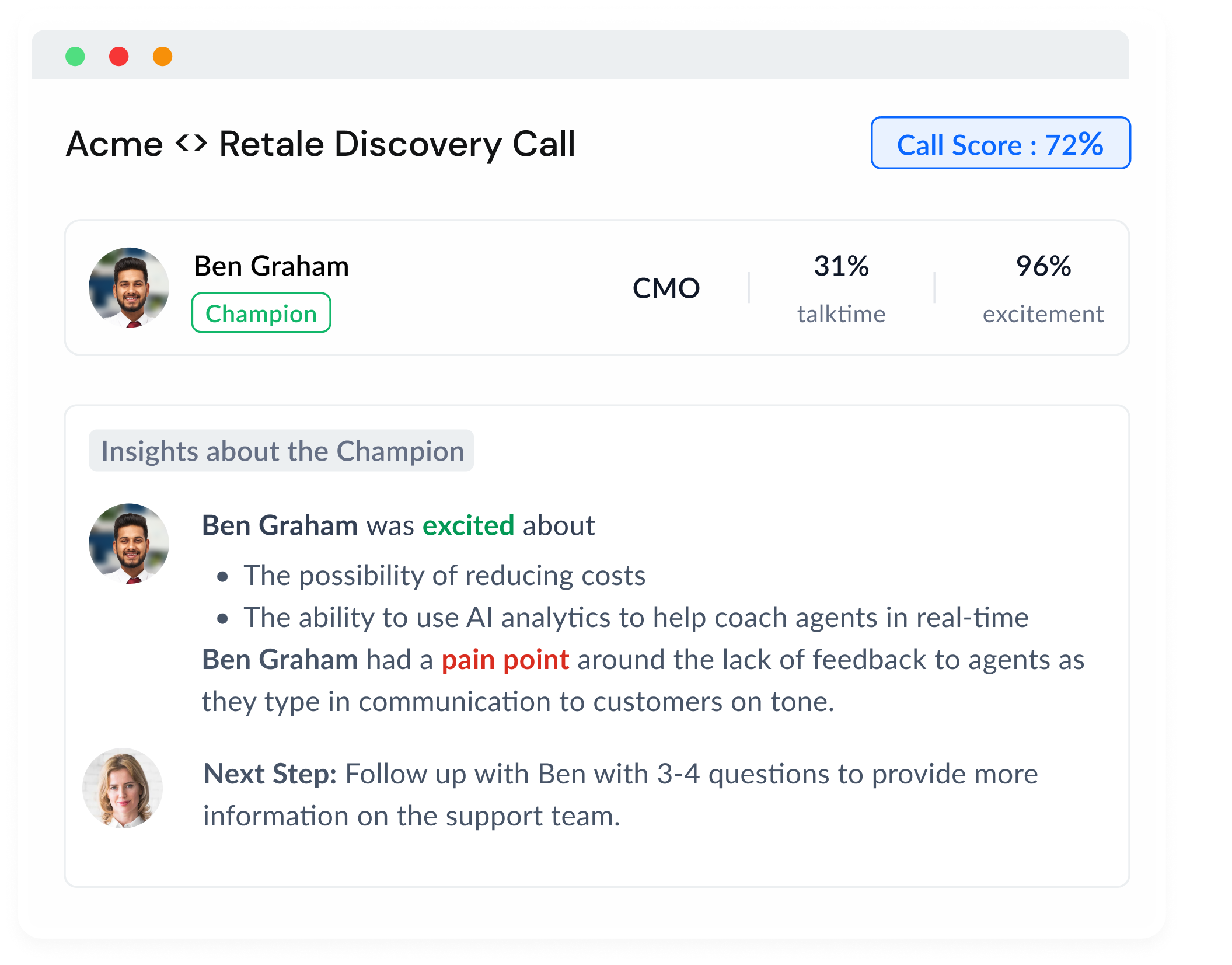With the ever-growing competition in the world of enterprise sales, engaging prospects during sales calls has become a crucial aspect of closing deals. Sales reps face numerous challenges, especially when it comes to multi-party video calls. In this post, we'll share some expert advice on how to boost prospect engagement in sales calls, specifically focusing on multi-party video meetings. This is our bread and butter at Sybill, and we dive deep into how an understanding of verbal and non-verbal cues during the call, and some preparation for it can go a long way in maintaining high prospect attention and engagement.
Get ready to amp up your sales calls and make a lasting impression on your prospects!
Setting the Stage for Success
Preparing for the call: research and goal setting
Before you even hit that "join call" button, it's important to do your homework. Research your prospects, their company, and any recent news or updates. Understand their pain points and how your product or service can address those issues. Set clear goals for the call, such as identifying key decision-makers, understanding their timeline, or uncovering any potential objections.
Crafting a powerful agenda
A well-thought-out agenda is the backbone of a successful sales call. Share the agenda with your prospects ahead of time, so they know what to expect and can prepare any necessary materials or questions. Include time for introductions, a brief product demo, and a Q&A session. Be sure to allocate enough time for each topic to ensure a smooth flow.
Utilizing visual aids and interactive tools
Visual aids like slides, charts, and graphics can help to illustrate your points and keep prospects engaged during the call. Interactive tools like polls, quizzes, or whiteboards can also encourage participation and make the meeting more dynamic. Choose tools that are easy to use and integrate seamlessly with your video conferencing platform.
Building Rapport with Multiple Stakeholders
Personalizing the conversation for each participant
In a multi-party video call, it's important to make each participant feel valued and included. Address them by name, refer to their specific concerns, and acknowledge their contributions to the discussion. Personalizing the conversation will create a stronger connection with each stakeholder and demonstrate your genuine interest in addressing their needs.
Balancing participation and managing interruptions
With multiple people on the call, it can be challenging to ensure that everyone gets a chance to speak and that the conversation doesn't get derailed by interruptions. Encourage participants to use the "raise hand" feature or type their questions in the chat to minimize interruptions. As the call leader, it's your responsibility to ensure that everyone gets a fair chance to participate and to diplomatically manage any interruptions that do occur.
Encouraging collaboration and idea sharing
Create an environment where prospects feel comfortable sharing their thoughts, opinions, and ideas. Ask open-ended questions that invite collaboration, such as "What are your thoughts on this feature?" or "How do you see this fitting into your current workflow?" Encourage participants to build on each other's ideas, which can lead to valuable insights and a stronger sense of ownership over the solution being discussed.
Mastering the Art of Active Listening
Demonstrating genuine interest in prospect concerns
Show your prospects that you genuinely care about their concerns by actively listening to what they have to say. Nod your head, maintain eye contact, and use verbal cues like "I see" or "That makes sense" to acknowledge their input. Active listening not only helps build rapport but also ensures you can address their concerns more effectively.
Asking clarifying questions
If something your prospect says is unclear or needs further explanation, don't hesitate to ask clarifying questions. This shows that you're paying attention and genuinely interested in understanding their perspective. It also helps you tailor your responses to better address their specific needs and concerns.
Summarizing and confirming understanding
Throughout the call, periodically summarize what you've heard from your prospects and confirm that you've understood their concerns correctly. This can help avoid misunderstandings and ensure that everyone is on the same page. It also demonstrates your commitment to addressing their needs accurately.
Handling Objections and Questions with Confidence
Anticipating potential objections
Before the call, try to anticipate any potential objections your prospects might have and prepare thoughtful responses. This will help you feel more confident during the call and allow you to address their concerns more effectively.
Utilizing the "feel, felt, found" technique
When handling objections, use the "feel, felt, found" technique to empathize with your prospects, relate to their concerns, and share a relevant solution or example. For instance, "I understand how you feel, others have felt the same way, but what they found was that our solution actually improved their productivity by 30%."
Remaining calm and professional
It's important to remain calm and professional when handling objections or answering questions, even if you feel challenged or under pressure. Keep your tone respectful and focus on addressing the concern at hand, rather than getting defensive or argumentative.
Analyzing Data on Prospect Attention from Calls and Improving
Leveraging Sybill to measure prospect engagement
To better understand how engaged your prospects were during the sales call, consider using a tool like Sybill. Sybill captures prospect engagement throughout the call by analyzing gaze patterns, nods, smiles, body posture, and body language. This invaluable data can help you pinpoint which parts of the call were engaging and which were less effective.
Identifying areas for improvement
By analyzing the data from Sybill, you can identify specific areas where you need to improve your presentation or approach. For example, if you notice that prospects tend to disengage during certain parts of the demo, consider revising that section or incorporating more interactive elements.
Implementing changes and tracking progress
Once you've identified areas for improvement, implement the necessary changes and continue to track prospect engagement using Sybill. This ongoing analysis will help you refine your sales call strategies and boost overall prospect engagement, especially during sales demos and deck presentations.
Conclusion
Boosting prospect engagement in multi-party sales calls is essential to closing deals in the competitive world of enterprise sales. By setting the stage for success, building rapport with multiple stakeholders, actively listening, handling objections confidently, and leveraging tools like Sybill to analyze and improve engagement, you'll be well on your way to mastering the art of sales calls and crushing your quotas.















.png)





